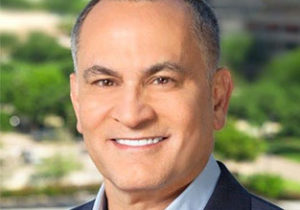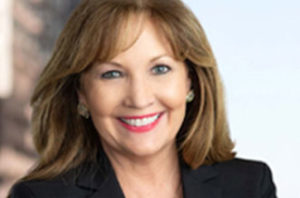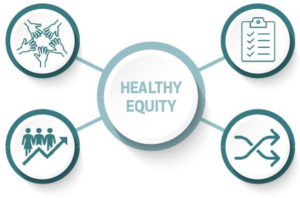By Bill Lucia, Sellers Dorsey Board Member, & Nancy Smith-Leslie, Director, Sellers Dorsey

 March 2022 – Health equity has become a strategic priority for many health care organizations, particularly those who serve Medicaid beneficiaries. More than half (61%) of Medicaid’s 73 million low-income beneficiaries identify as Black, Hispanic, Asian American, or another non-White race or ethnicity—the same populations that have been disproportionately affected by COVID-19. The pandemic aside, data from the Department of Health and Human Services show other preexisting racial and ethnic disparities in health care. For example, Black, American Indian, and Alaska Native (AI/AN) women are two to three times more likely to die from pregnancy-related causes than White women. And nationally, the infant mortality rate of Black infants is more than twice that of White infants. The COVID-19 public health emergency has exacerbated health outcomes in certain populations and highlighted existing problems of inequity in health care.
March 2022 – Health equity has become a strategic priority for many health care organizations, particularly those who serve Medicaid beneficiaries. More than half (61%) of Medicaid’s 73 million low-income beneficiaries identify as Black, Hispanic, Asian American, or another non-White race or ethnicity—the same populations that have been disproportionately affected by COVID-19. The pandemic aside, data from the Department of Health and Human Services show other preexisting racial and ethnic disparities in health care. For example, Black, American Indian, and Alaska Native (AI/AN) women are two to three times more likely to die from pregnancy-related causes than White women. And nationally, the infant mortality rate of Black infants is more than twice that of White infants. The COVID-19 public health emergency has exacerbated health outcomes in certain populations and highlighted existing problems of inequity in health care.

Medicaid organizations have an opportunity to apply the lessons learned over the past two years in managing through the pandemic, advance whole-person care, address social determinants of health, and realize progress toward higher-quality and better-value care.
“The COVID-19 pandemic has heightened the disparities that exist in health care, particularly for many individuals that we serve in publicly funded programs.” -Nancy Smith-Leslie
![]() 1. Prioritize local collaboration
1. Prioritize local collaboration
Driving improvements in health equity will take commitment from all stakeholders—including representatives from local, state, and federal governments – and community-level engagement is critical. Community hospitals may find they can best serve their communities by operating as a hub surrounded by spokes of advanced primary care organizations, all of which send referrals and build connections with community resources such as food banks.
This collaboration with local organizations can build a stronger safety net for vulnerable populations. Engaging community workers in health care improvements can also help build trust in authority that is critical for encouraging people to seek preventive care or chronic disease management. This lack of trust has slowed equity progress among many vulnerable populations.
In time, these collaborations can support efforts to reimburse for services that traditionally have no billing codes, such as services provided by community organizations to address homelessness and food insecurity. Including these services in claim transactions can build a better claim data set about individuals for future analysis and ensure that at-risk individuals receive recommended social services.
“The team working on this issue should reflect the population being served, including at the state Medicaid agencies.” -Nancy Smith-Leslie
![]() 2. Make stronger use of data analytics
2. Make stronger use of data analytics
Data collection and analysis is critical in identifying underserved populations because data serves as the basis for establishing targeted goals for improvements in health equity. Driving change will require more comprehensive demographic data about local populations—as well as the ability to stratify these data by variables such as ethnicity, geography, gender, language, and income. In addition, finding new methods of collecting currently unavailable data will also improve health equity.
Measurement begins by establishing a baseline. However, the metrics used to measure progress will differ based on the specific objectives targeted. For example, if an MCO’s first initiative is to redirect more Medicaid members from using the emergency room for primary care to community federally qualified health center (FQHC) clinics or major group practices, it may be possible to measure quarter-over-quarter results using analysis of claims data.
By prioritizing a few clear, measurable goals, particularly those that align with measures already being collected, organizations can demonstrate the progress that will be necessary to secure additional funding support or expand effective programs.
“I’ve long said the answer is in the data; we may just need more of it.” -Bill Lucia
![]() 3. Adopt value-based payment strategies
3. Adopt value-based payment strategies
Health equity issues demand a care approach that looks beyond disease to consider social, behavioral, and medical issues to drive better outcomes. As a result, adoption of more value-based payment strategies, which incentivize Medicaid providers and payers to treat the whole person, will be critical in driving health equity improvements.
State Medicaid agencies can leverage their MCO contracts to accelerate wide-scale adoption of value-based payment at the provider level and also hold MCOs accountable for progress on health equity improvements. MCOs and provider programs may consider rewarding top performers that prove they have moved the needle on health equity, either through specific programs and their outcomes or improvements in outcomes for targeted populations.
“We’re trying to migrate ourselves from this sick care system to a health care system.” -Bill Lucia
![]() 4. Create a culture that values change
4. Create a culture that values change
Driving this level of change may require a dramatic shift in approach from Medicaid providers and payers. This level of change is best supported with a complementary shift in organizational culture. Some organizations may find they need to break down hierarchical barriers to reform before they can implement necessary changes in business process and staffing responsibilities to support new programs. Consider surveying staff to assess employees’ readiness for change. Awareness is essential before leading others down the path of culture change.
With an appropriate change management framework, organizations can create a culture that encourages new and innovative strategies.
“It’s Medicaid’s moment to take the lead and transform the system. There’s a lot of hard work ahead, but it’s also exciting to think about the many opportunities.” -Nancy Smith-Leslie
Take the next step
Ultimately, it will require a combination of these novel approaches to begin driving improvements in health equity. It will also take time. There are no quick wins in health equity, due to institutional racism, poverty, health literacy, and challenges in addressing social determinants of health.
But building strategies and pulling together the tools to move in this direction doesn’t have to be overwhelming.
“Medicaid is uniquely positioned as the health care program that has the best chance to impact health inequality.” -Bill Lucia
ABOUT THE AUTHORS
Bill Lucia, Sellers Dorsey Board Member
Bill Lucia is the former chairman, president and chief executive officer of HMS, a leading health care analytics and technology company. Under his leadership, HMS grew revenue dramatically, serving 500 health care payers and 50 government agencies in 40 plus states. He joined the Sellers Dorsey Board of Directors in 2021 and is passionate about the role health care organizations can have to further protect our nation’s safety net and assuring equitable health care for all.
Nancy Smith-Leslie, Director, Sellers Dorsey
Nancy Smith-Leslie is a seasoned health care executive with 20 years of experience in health care policy, programs, and operations. Prior to Sellers Dorsey, she served as Director of the Medical Assistance Division of the New Mexico Human Services Department. She continues to leverage her experience to provide strategic advice to state Medicaid agencies, managed care plans, health care providers, and others. She is a thought leader on managed care program innovation and payment reform with a proven track record for helping public and private entities expand their programs, services, and products to improve health outcomes.
About Sellers Dorsey
Sellers Dorsey is a leading health care consulting firm with deep expertise in Medicaid. Having consulted on a range of financing, policy, and operational projects since 2000, they help clients on all sides of Medicaid realize opportunities to enhance people’s lives.
With experience in more than 40 states, they provide a fully integrated suite of services to a wide array of clients. Their team comprises former state and federal policy officials, state Medicaid directors, health care executives, and other professionals offering a breadth of expertise, practical experience, and creative problem solving you won’t find anywhere else. Learn more at www.sellersdorsey.com.


Leave a Reply